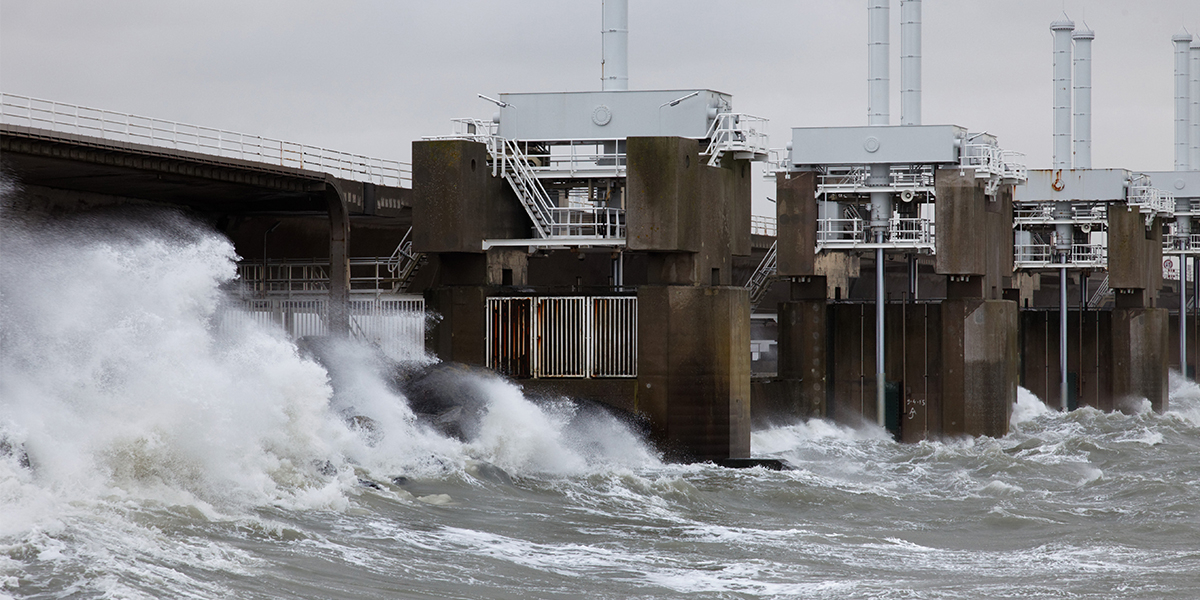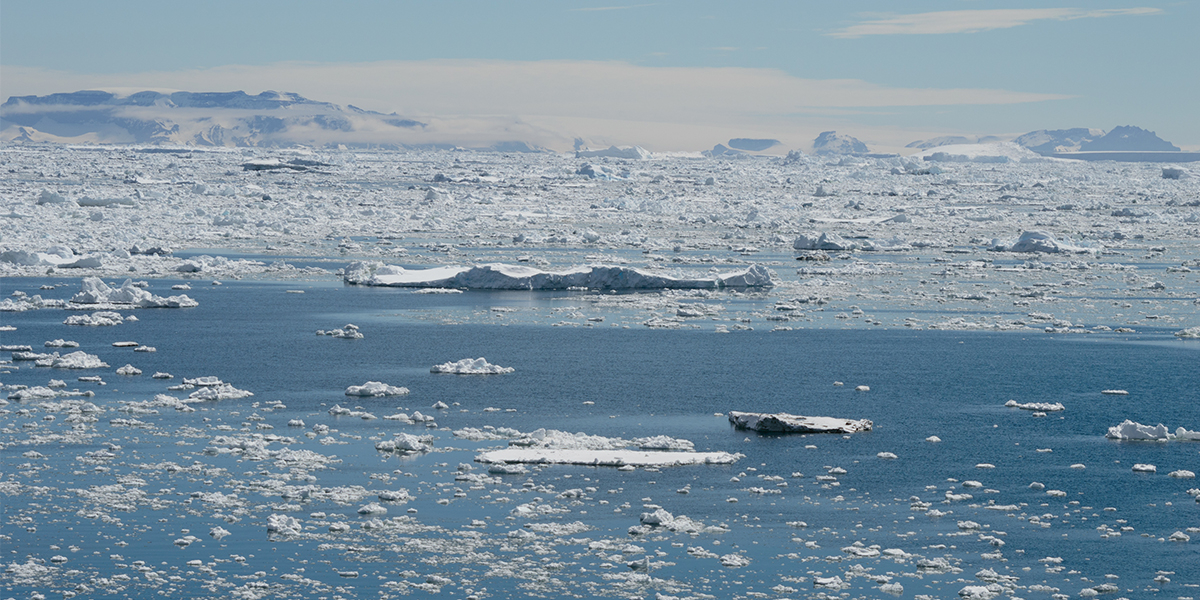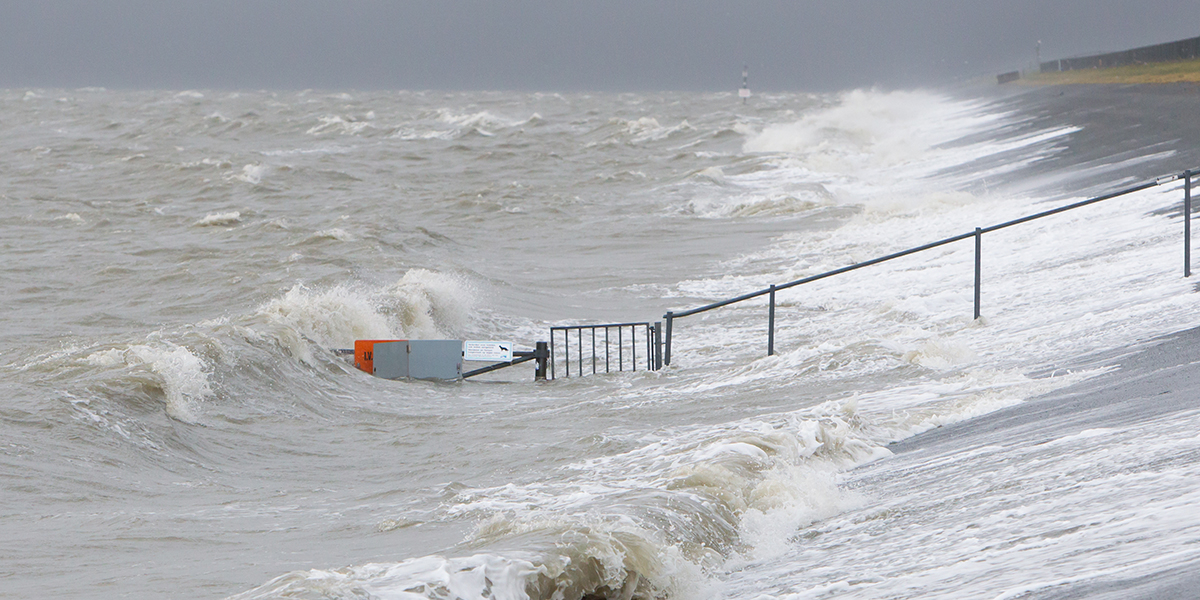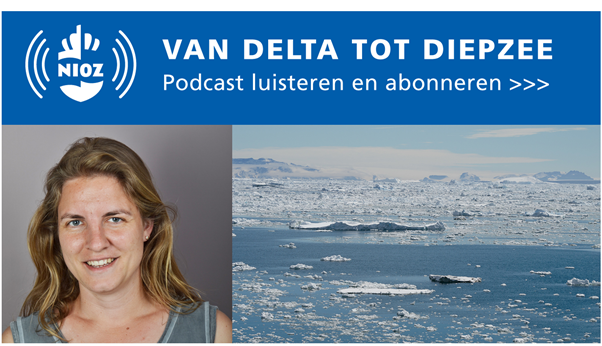Sea levels rising ever faster according to IPCC climate report 2021
~~~for Dutch scroll down ~~

This UN climate report brings together and compares the findings from over 14,000 scientific articles on climate change. The report was reviewed in three rounds by scientists and governments, resulting in a total of over 78,000 comments. 234 climate scientists from around the world contributed to the report. Researcher Dr. Aimée Slangen of the Royal Netherlands Institute for Sea Research (NIOZ) is one of the five Dutch authors, and she is the lead author for the topic of sea level rise together with Dr. Robert Kopp from the US.
Sea level as a thermometer of climate change
Aimée Slangen: "Sea level rise is caused by the warming of the climate. Because so many important processes come together in sea level rise, it is a kind of thermometer of climate change. Warmer ocean water expands, which raises the sea level. Melting land ice from glaciers and ice caps also ends up in the ocean, causing the sea level to rise even further. In addition, groundwater is pumped up for consumption and for agriculture, for example, and this water eventually ends up in the ocean as well."
Even more concrete predictions than previous IPCC report from 2013
"Compared to the previous IPCC report from 2013, the trends and numbers have not changed all that much. But because we have a better understanding of how all the processes react to rising temperatures, the sea level scenarios are becoming more and more accurate. For example, we can now make concrete what the expected contribution of Antarctic melting is for various greenhouse gas scenarios, which was not possible in the previous report”, according to Slangen.
The Netherlands more affected by melting of the Antarctic ice sheet
Sea level rise is not the same everywhere in the world: there are large regional differences. Nobody lives at the global mean sea level rise. How fast the sea level will rise at each location depends on the warming and flow of the ocean, the location on Earth with respect to the glaciers and ice caps, and also on local movement of the Earth’s crust.
For us in Northern Europe, for example, the melting of Antarctica is particularly relevant as we will experience an additional 10% to the global mean sea level rise caused by Antarctica. This is due to the gravitational effect. All mass on earth attracts each other, and therefore the heavy ice mass that now covers Antarctica, draws the ocean water towards itself. It may sound counterintuitive, but when ice melts in Antarctica, the gravitational force is reduced there, causing the sea level to fall near the South Pole. The additional water from Antarctica has to go somewhere, and as a result, the sea level in the northern hemisphere actually rises more than the global average.
Storm-surge barriers will need to close more often in the Netherlands
"You can see the low-lying delta of the Netherlands as a kind of drained bathtub, with the Dutch living at the bottom of the tub, and the water on the outside rising higher and higher. The closer the water gets to the rim of the tub, the greater the chance of flooding when there's a storm."
Due to sea level rise, we are going to see water heights that we currently experience once a century much more frequently. In the Netherlands this will increase to every two to ten years, depending on the amount of sea level rise. For the storm-surge barriers Oosterscheldekering or Maeslantkering, rising sea levels will mean that they will have to close (much) more often than at present to prevent flooding from the sea.
Sea level will continue to rise for centuries to come
The sea level will continue to rise for a long time after the year 2100, but the IPCC report shows that the amount and speed of the sea level rise is strongly determined by the emission of greenhouse gases from now on.

Zeespiegel stijgt steeds sneller volgens het IPCC-klimaatrapport 2021
In 3000 jaar steeg de gemiddelde zeespiegel nog nooit zo snel als in de afgelopen eeuw, waarin er 20 centimeter bij is gekomen. En de zeespiegel stijgt steeds sneller. De komende dertig jaar komt er nog eens zo’n 20 centimeter bij. Als de uitstoot van broeikasgassen blijft doorgaan zoals nu, dan staat de zeespiegel over tachtig jaar ongeveer 80 centimeter hoger. Als de uitstoot teruggebracht wordt naar nul in 2050, dan stijgt de zeespiegel een stuk minder snel, maar nog steeds met zo’n 40 centimeter tegen het jaar 2100. Dit zijn enkele uitkomsten van het hoofdstuk over zeespiegelstijging in het nieuwste IPCC-klimaatrapport van de Verenigde Naties, dat op 9 augustus gepresenteerd is.
In het VN-klimaatrapport worden de bevindingen uit ruim 14.000 wetenschappelijke artikelen over klimaatverandering samengebracht en met elkaar vergeleken. Het rapport is in drie rondes bekeken door wetenschappers en overheden, wat in totaal meer dan 78.000 commentaren opleverde. Aan het rapport schreven 234 klimaatwetenschappers van over de hele wereld mee. Onderzoeker dr. Aimée Slangen van het Koninklijk Nederlands Instituut voor Onderzoek der Zee (NIOZ) is een van de vijf Nederlandse auteurs, en zij is de hoofdauteur voor het onderwerp zeespiegelstijging.
Zeespiegel als thermometer van klimaatverandering
Aimée Slangen: “Zeespiegelstijging wordt veroorzaakt door de opwarming van het klimaat. Het is een soort thermometer van klimaatverandering, omdat er zo veel belangrijke processen in samen komen. Warmer oceaanwater zet uit en daardoor komt de zeespiegel hoger te staan. Ook komt er smeltend landijs van gletsjers en ijskappen in de oceaan terecht waardoor de zeespiege nog verder stijgt. Daarnaast wordt er grondwater opgepompt voor bijvoorbeeld consumptie en irrigatie van landbouwgrond, en ook dit water komt uiteindelijk in de oceaan terecht.”
Nog concretere voorspellingen dan vorige IPCC-rapport uit 2013
“Vergeleken met het vorige IPCC-rapport uit 2013 zijn de trends en getallen niet verschrikkelijk veel veranderd. Maar doordat we steeds beter begrijpen hoe alle processen reageren op toenemende temperaturen worden de zeespiegelscenario’s wel steeds preciezer. Zo kunnen we nu concreet maken wat de verwachte bijdrage van het smelten van Antarctica is voor verschillende broeikasgas-scenario’s, terwijl dit in het vorige rapport nog niet kon”, aldus Slangen.
Nederland meer last van smelt op Antarctica
De zeespiegelstijging is niet overal ter wereld hetzelfde: er zijn grote regionale verschillen. Niemand woont aan de wereldgemiddelde zeespiegelstijging. Hoe snel op iedere plek de zeespiegel gaat stijgen hangt af van de opwarming en stroming van de oceaan, de ligging op aarde ten opzichte van de gletsjers en ijskappen, en ook van de lokale bodembeweging.

Voor ons in Noord-Europa is bijvoorbeeld het smelten van Antarctica extra relevant omdat we hier nog eens 10% bovenop de wereldgemiddelde zeespiegelstijging - veroorzaakt door Antarctica - gaan ervaren. Dit komt door het zwaartekrachtseffect. Alle massa op aarde trekt elkaar aan, en daardoor trekt de zware ijsmassa die nu op Antarctica ligt als het ware het oceaanwater naar zich toe. Het klinkt onverwacht, maar als er ijs smelt op Antarctica, dan wordt daar de aantrekkingskracht minder, waardoor de zeespiegel in de buurt van de Zuidpool daalt. Het smeltwater komt in de oceaan terecht en dat water moet ergens naartoe, en dat is het noordelijk halfrond: bij ons stijgt hierdoor de zeespiegel juist meer dan gemiddeld.
In Nederland stormvloedkering vaker dicht
“Je kunt de laaggelegen delta die Nederland is zien als een soort leeggepompte badkuip, waar wij op de bodem wonen en waar het water aan de buitenkant steeds hoger tegenaan komt te staan. Hoe dichter het water bij de rand komt, hoe groter de kans op overstromingen als het stormt.”
Door zeespiegelstijging gaan we waterhoogtes die we nu maar eens per eeuw meemaken veel vaker zien. In Nederland wordt dit iedere twee tot tien jaar, afhankelijk van de hoeveelheid zeespiegelstijging. Voor de Oosterscheldekering of de Maeslantkering zal de stijgende zeespiegel betekenen dat ze (veel) vaker dan nu dicht moeten gaan om overstromingen vanuit zee te voorkomen.
Zeespiegel stijgt nog eeuwen door
Ook na het jaar 2100 zal de zeespiegel nog lang blijven stijgen, maar het IPCC-rapport laat zien dat de hoeveelheid en snelheid van de zeespiegelstijging sterk bepaald wordt door de uitstoot van broeikasgassen vanaf nu.
